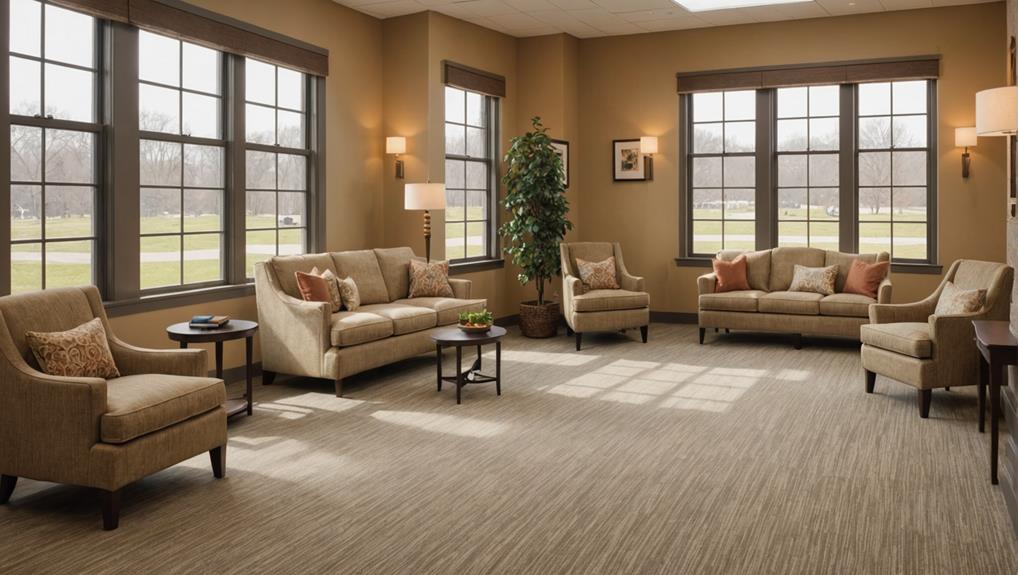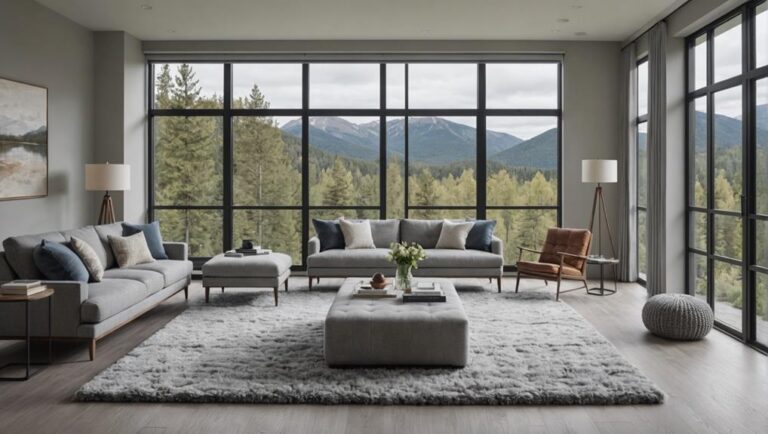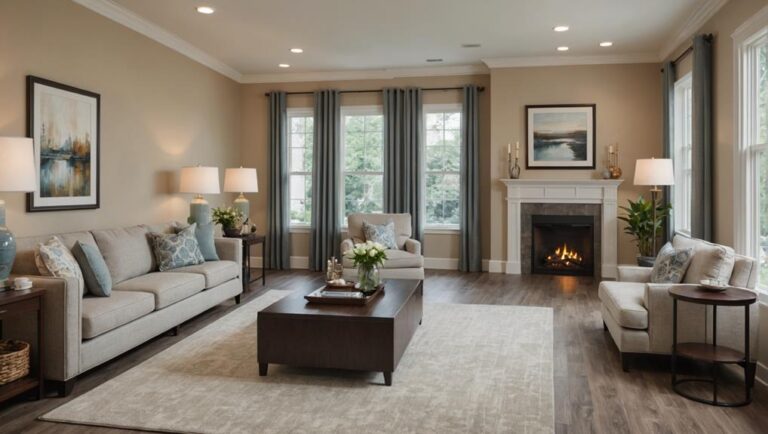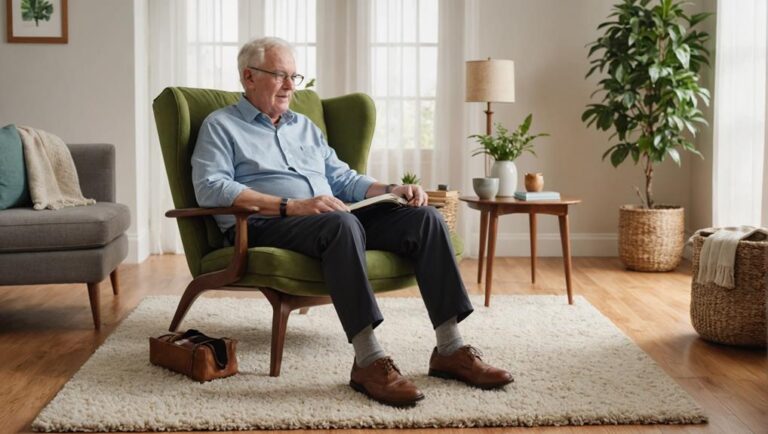When choosing flooring for memory care facilities, safety and comfort are paramount. Opt for non-slip surfaces like vinyl or cork, which provide durability and cushioning. Soft, neutral colors can create a calming atmosphere, while contrasting colors aid navigation. Take into account maintenance—easy-to-clean materials like rubber help maintain hygiene. Additionally, incorporate sound-absorbing flooring to reduce noise levels, creating a peaceful environment. Make sure your layout encourages easy movement for residents. Focusing on these elements helps create a supportive space for individuals with memory challenges. There's a lot more to reflect upon, so keep exploring for additional insights and tips.
Importance of Flooring Selection
When it comes to creating a safe and nurturing environment in memory care facilities, the choice of flooring can't be overlooked. The right flooring can greatly impact the well-being of residents, promoting both safety and comfort. You want to guarantee that the flooring minimizes the risk of slips and falls, which is essential for individuals with cognitive impairments. A smooth, even surface is crucial, as it helps prevent accidents while also supporting mobility aids like walkers and wheelchairs.
Beyond safety, think about how flooring can enhance cognitive stimulation and sensory engagement. Different textures and colors can create a more inviting atmosphere, encouraging residents to explore their surroundings. For instance, using contrasting colors can help individuals with visual impairments navigate spaces more easily. Incorporating varied patterns can also stimulate cognitive functions, making the environment more engaging.
Moreover, the acoustics of flooring materials play a role in creating a calming atmosphere. Soft flooring options can help absorb sound, reducing the noise level and promoting a peaceful setting. This is especially important for residents who may become anxious in noisy environments.
Ultimately, selecting the right flooring is about more than just aesthetics; it's about creating a holistic environment that supports safety, comfort, and cognitive engagement. By prioritizing flooring that aligns with these goals, you can foster a nurturing space that enhances the quality of life for residents in memory care facilities.
Ideal Flooring Materials
Choosing the right flooring materials is essential for ensuring the safety and comfort of residents in memory care facilities. When you think about the environment in which these individuals live, you'll want to select flooring that not only looks good but also supports their well-being. Here are some ideal flooring materials to contemplate:
- Vinyl Flooring: This is a popular choice due to its durability and ease of maintenance. With various texture variations, it can mimic natural materials while providing a safe, slip-resistant surface.
- Cork Flooring: An eco-friendly option, cork offers cushioning underfoot, reducing the risk of injury from falls. It's also resistant to mold and mildew, making it a healthy choice for residents.
- Carpet Tiles: These allow for easy replacement if a section gets damaged. Choose low-pile options for ease of movement and opt for color variations to assist with wayfinding.
- Bamboo Flooring: Another eco-friendly option, bamboo is durable and sustainable. It offers a unique aesthetic and is available in different finishes and textures to create a warm atmosphere.
Safety Features to Consider
While selecting the right flooring materials is important, incorporating safety features is equally essential in memory care facilities. You want to guarantee that the environment minimizes risks and promotes independence while providing the necessary support. One of the primary considerations should be slip resistance. Flooring with a high slip resistance rating can greatly reduce the likelihood of falls, which are a common concern among individuals with memory challenges. Look for flooring options that have been specifically designed to provide traction, even when wet.
Another critical aspect is the cushioning of the flooring. A softer, more cushioned surface can help absorb impact if a fall does occur, thereby reducing the risk of injury. Consider materials that offer both durability and comfort, confirming that they can withstand the daily wear and tear of a busy facility while keeping residents safe.
In addition, you might want to evaluate the changes between different flooring types. Smooth, gradual changes can help prevent tripping hazards that might arise from abrupt alterations in height or texture.
Color and Pattern Choices
When choosing colors and patterns for flooring in memory care facilities, it's important to create a calming environment. Soft, neutral palettes can help reduce anxiety, while simple patterns can provide visual interest without overwhelming the senses. Focusing on these elements can enhance comfort and orientation for residents.
Calming Color Palettes
Creating a calming environment in memory care facilities often hinges on the right color palettes and patterns. Utilizing color psychology can greatly impact residents' moods and behaviors, making it essential to choose shades that promote tranquility and comfort. Here's a quick list to help you select calming colors for your facility:
- Soft Blues: These hues evoke feelings of serenity and can help reduce anxiety.
- Gentle Greens: Associated with nature, greens create a peaceful atmosphere and promote relaxation.
- Warm Neutrals: Colors like beige and soft taupe can make spaces feel safe and welcoming.
- Pale Lavenders: These shades offer a soothing effect and can enhance a sense of calmness.
Incorporating these colors into your flooring and overall design can create sensory environments that support emotional well-being. Remember, it's not just about aesthetics; it's about fostering safety and comfort for residents. When you thoughtfully select color palettes, you're not only enhancing the space but also contributing to a nurturing environment that helps individuals feel secure and at ease.
Simple Pattern Designs
Choosing simple pattern designs for flooring in memory care facilities can greatly enhance the living environment for residents, as these patterns can provide both visual interest and a sense of orientation. By opting for uncomplicated designs, you create a space that fosters cognitive engagement and offers necessary visual stimulation without overwhelming residents.
Here's a quick reference table to guide your pattern choices:
| Pattern Type | Benefits | Considerations |
|---|---|---|
| Stripes | Enhances depth perception | Make sure lines aren't too busy |
| Dots | Encourages movement and navigation | Avoid high-contrast colors |
| Geometric Shapes | Provides structure and clarity | Keep shapes simple |
| Soft Waves | Creates a calming atmosphere | Use subtle color variations |
| Floral Prints | Adds warmth and familiarity | Choose large, easy-to-spot patterns |
When selecting these patterns, prioritize safety by avoiding designs that could confuse or distract residents. Simple patterns can not only beautify the space but also help residents feel more grounded, allowing them to navigate their environment with greater ease and confidence.
Maintenance and Durability
Maintaining a safe and inviting environment in memory care facilities starts with selecting durable flooring that can stand up to daily wear and tear. It's essential to choose materials that not only enhance the aesthetic but also promise longevity and ease of maintenance. The right flooring can greatly contribute to a secure atmosphere for residents and staff alike.
Here are some practical tips for ensuring your flooring lasts and remains safe:
- Choose High-Quality Materials: Opt for flooring options like vinyl or laminate, known for their durability and resistance to scratches and stains.
- Implement Effective Cleaning Strategies: Regular cleaning is essential. Develop a routine that includes sweeping, mopping, and using appropriate cleaning solutions to extend the flooring lifespan.
- Inspect Regularly: Conduct frequent assessments for wear and tear. Addressing issues like scratches or loose tiles promptly can prevent further damage and enhance safety.
- Use Protective Furniture Pads: Placing pads under furniture can minimize scuff marks and dents, prolonging the life of your flooring.
Acoustic Considerations
Sound plays an essential role in the overall well-being of residents in memory care facilities. It's critical to create an environment that minimizes auditory distractions and promotes a sense of calm. By focusing on acoustic considerations in flooring, you can markedly enhance the comfort and safety of your residents.
One key aspect is sound absorption. Selecting flooring materials that absorb sound can help reduce echoes and minimize the overall noise level in common areas. Carpeting, for instance, provides excellent sound absorption properties and can create a quieter atmosphere. If carpet isn't suitable for your facility, consider vinyl or cork options, which also offer sound-dampening qualities while being easier to maintain.
Noise reduction is another important factor. Excessive noise can lead to confusion and agitation among residents, adversely affecting their mental state. By choosing flooring that minimizes impact noise, such as resilient flooring with cushioning underlayment, you can help create a peaceful environment. This is particularly essential in high-traffic areas where footsteps might otherwise contribute to disruptive sounds.
Moreover, consider the layout of your facility. Designating quiet zones with appropriate flooring can provide residents spaces to retreat and find solace. Combining thoughtful flooring choices with strategic design can enhance the overall auditory experience, making the environment more conducive to relaxation and engagement.
Comfort and Accessibility
Creating a calming environment goes hand in hand with guaranteeing comfort and accessibility for residents in memory care facilities. When floor planning, it's crucial to contemplate how design elements can enhance both safety and overall well-being. Prioritize ergonomic design and sensory stimulation to create spaces where residents can thrive.
Here are four key aspects to focus on:
- Non-Slip Surfaces: Choose flooring materials that minimize the risk of slips and falls. Textured surfaces can provide additional grip, helping residents navigate their environment safely.
- Soft Underfoot: Opt for flooring that feels comfortable underfoot. Carpeting or padded vinyl can reduce the discomfort from standing for long periods, enhancing overall physical comfort.
- Clear Pathways: Guarantee that hallways and common areas are spacious and free of obstacles. This promotes easy movement for residents, especially those using walkers or wheelchairs.
- Color and Texture: Use colors and textures that provide sensory stimulation without overwhelming. Soft, warm tones can create a welcoming atmosphere, while varied textures can encourage exploration and engagement.
Budgeting for Flooring Solutions
When budgeting for flooring solutions in memory care facilities, it's crucial to assess your specific needs first. Consider not just the upfront material costs but also the long-term maintenance expenses that can add up over time. By planning carefully, you can guarantee a safe and comfortable environment for residents without breaking the bank.
Assessing Facility Needs
Budgeting for flooring solutions in memory care facilities requires careful evaluation of both functionality and resident safety. You need to assess your facility's specific needs to guarantee that the flooring supports resident mobility and enhances overall safety. Here are four key factors to reflect on:
- Facility Layout: Evaluate how the design of your facility impacts movement. Open layouts can reduce confusion and help residents navigate more easily.
- Foot Traffic: Reflect on areas with high foot traffic. Flooring in these zones should be durable and able to withstand wear while providing adequate grip to prevent slips.
- Mobility Aids: If your residents use walkers or wheelchairs, guarantee the flooring is smooth yet textured enough to support safe maneuverability.
- Maintenance: Choose flooring that is easy to clean and maintain. This not only keeps the environment hygienic but also guarantees longevity, making your budget stretch further.
Material Cost Considerations
Selecting the right flooring materials for memory care facilities can have a significant impact on both budget and resident well-being. When you're managing budget constraints, it's important to balance quality with affordability. Consider the durability of flooring options; higher upfront costs may save you money in the long run due to reduced replacement needs.
Installation techniques can also affect your overall budget. Some materials require more labor-intensive installation, which can drive up costs. On the other hand, options that offer easier installation may help you stay within budget while ensuring safety for residents. Look for materials that can be installed quickly and with minimal disruption to daily activities.
Additionally, think about the long-term benefits of choosing the right materials. Non-slip surfaces, for instance, are vital for preventing falls, and investing in these can ultimately reduce liability costs and enhance resident safety. Always prioritize options that not only fit your budget but also uphold the well-being of residents. By considering both initial material costs and installation techniques, you can create a safe, welcoming environment that supports memory care needs without compromising your financial goals.
Long-term Maintenance Expenses
While initial costs are important, understanding long-term maintenance expenses is just as essential for memory care facilities. Investing in flooring isn't just about the upfront price; it's about how well those materials perform over time. Conducting an investment analysis can help you weigh the lifecycle costs against the benefits of various flooring options.
Here are some key factors to evaluate when budgeting for flooring solutions:
- Durability: Choose materials that can withstand high foot traffic and resist wear and tear.
- Cleaning Requirements: Opt for flooring that's easy to clean and maintain, reducing labor costs and time.
- Repair and Replacement Costs: Assess how often you might need to repair or replace the flooring, and factor that into your budget.
- Safety Features: Contemplate slip-resistant surfaces and other safety features that can prevent accidents and protect residents.
Frequently Asked Questions
How Can Flooring Impact Residents' Emotional Well-Being?
Flooring can greatly impact your emotional well-being. Choosing colors based on color psychology can evoke feelings of calmness or happiness, enhancing your mood. Additionally, textures that provide comfort underfoot can create a sense of security, making you feel more at ease in your environment. Safe, supportive flooring not only prevents falls but also contributes to a nurturing atmosphere, ultimately promoting a sense of belonging and emotional stability in your daily life.
Are There Specific Flooring Types to Avoid for Memory Care?
When it comes to flooring, you wouldn't want to risk a slip that could send someone flying like a superhero! So, avoid shiny surfaces that lack slip resistance; they can turn a simple stroll into a dangerous adventure. Also, steer clear of hard flooring with poor acoustic properties. Loud echoes can be unsettling, making residents feel anxious. Prioritizing safety and comfort will create a calming environment that supports emotional well-being.
Can Flooring Choices Reduce Caregiver Stress?
Absolutely, flooring choices can greatly reduce caregiver stress. By incorporating texture variety, you can create a more engaging environment that aids in navigation, making it easier for both residents and caregivers. Additionally, using color psychology can evoke calmness or alertness, helping to manage the atmosphere. These thoughtful choices not only enhance safety but also foster a supportive space, allowing you and your team to focus on what truly matters: providing quality care.
How Often Should Flooring Be Replaced in Memory Care Facilities?
When thinking about how often flooring should be replaced, you'll want to establish a replacement schedule that balances safety and budget. Generally, flooring should be assessed every 5-7 years, but high-traffic areas might need more frequent updates. Keep cost considerations in mind; investing in durable materials can save money long-term. Regular inspections can help you identify wear and tear, ensuring a safe environment for residents and peace of mind for caregivers.
What Role Does Lighting Play in Flooring Selection?
You know how certain rooms feel warmer and more welcoming with the right lighting? Well, when it comes to flooring selection, ambient lighting plays a huge role. It can enhance color contrast, making it easier for individuals to navigate their environment safely. Choosing flooring that complements your lighting not only creates a comforting atmosphere but also helps prevent accidents. So, keep in mind how lighting and color work together for a secure space.




